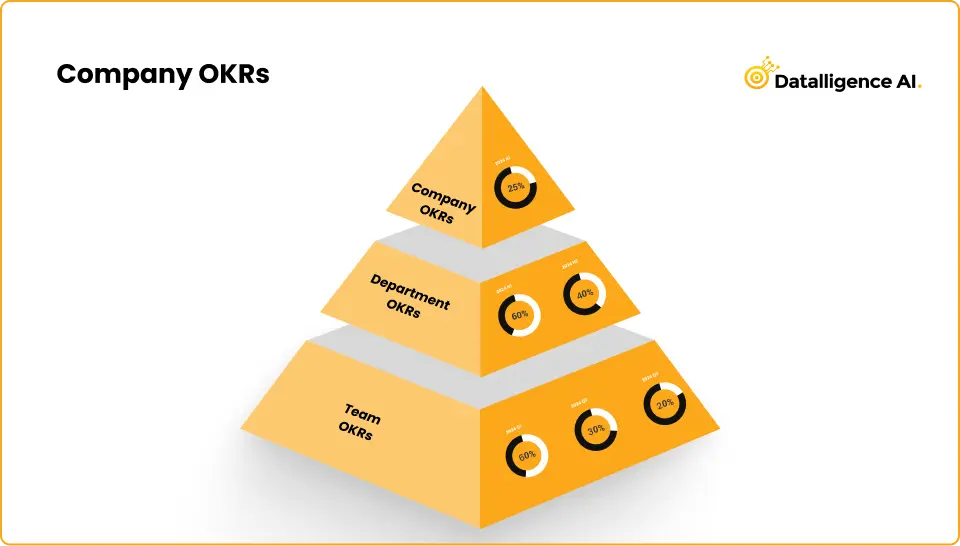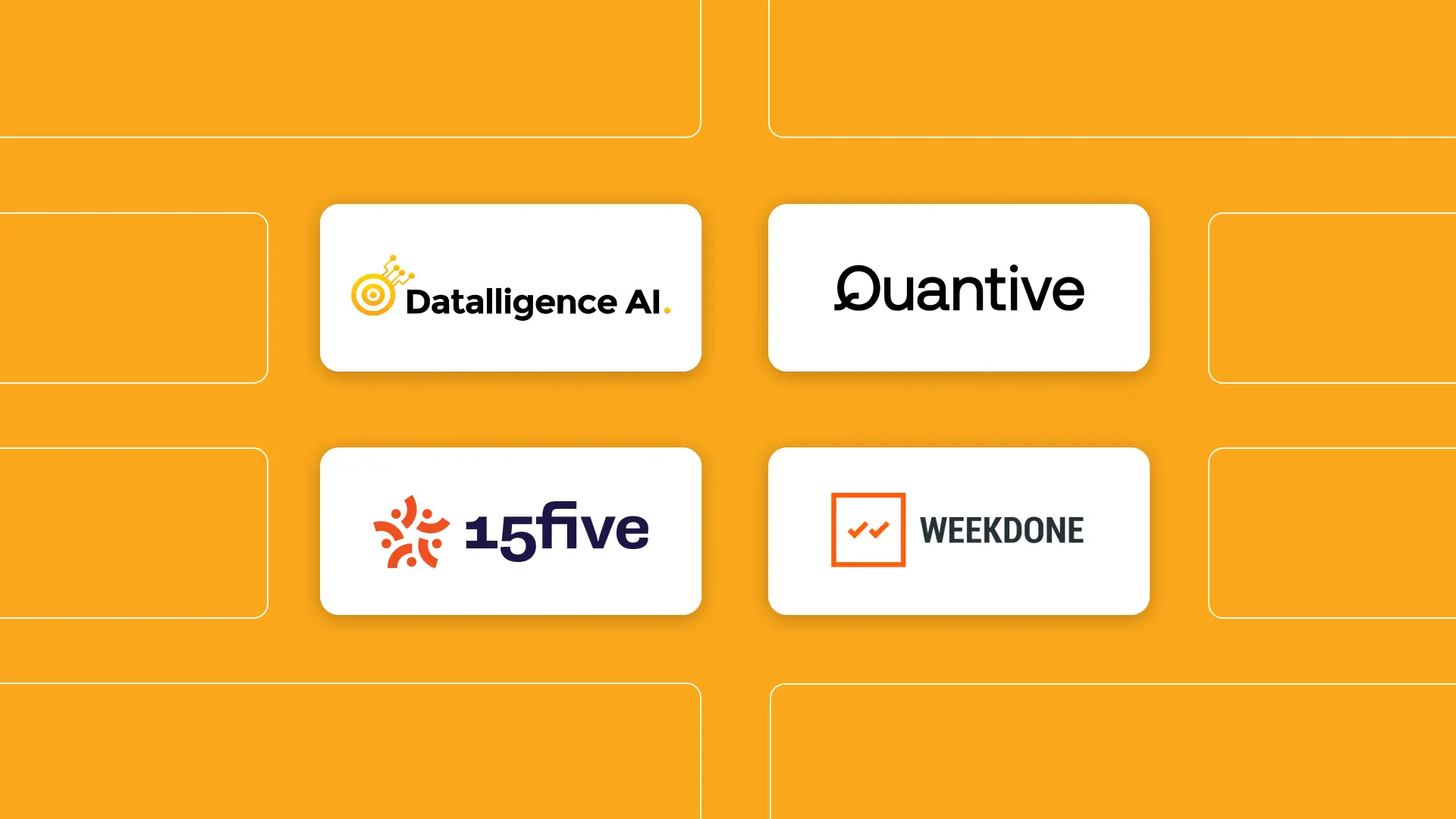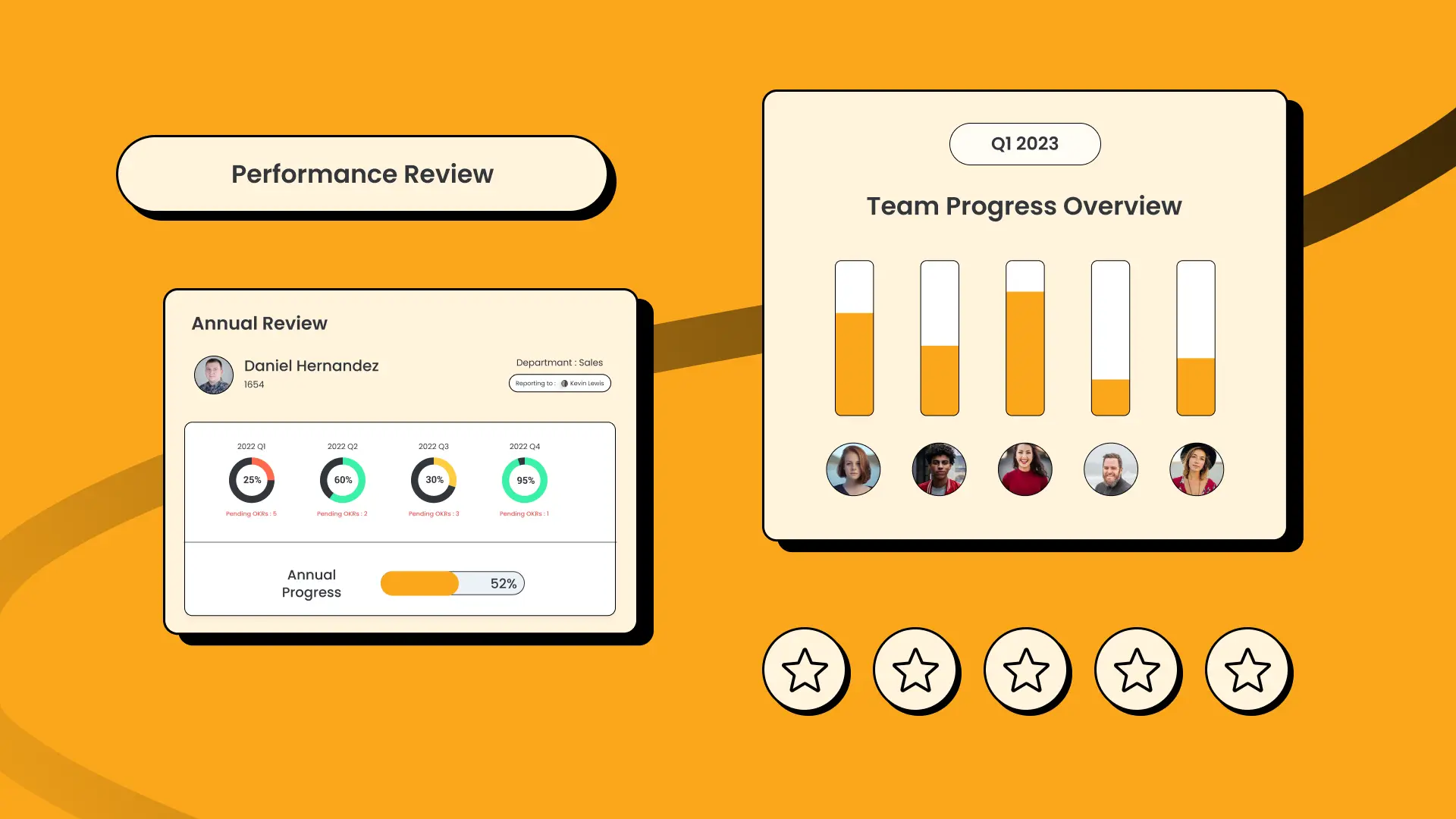How to Start with OKRs?
OKRs, or Objectives and Key Results, are more than just a goal-setting framework; they are a system to drive focus, alignment, and measurable outcomes. By clearly defining what your organization aims to achieve and how you’ll measure progress, OKRs enhance both individual and team performance.
Here’s why OKRs are powerful: They bring clarity to goals, align teams across departments, and foster transparency, all while boosting employee engagement. When employees can clearly see how their work contributes to company goals, they feel motivated to give their best.
If you’re considering starting with OKRs, here’s a detailed step-by-step guide to get you started.
Why Adopt OKRs?
Before diving into how OKRs work, it’s important to understand their benefits and why they are a game-changer for organizations:
Action-Oriented Teams
OKRs foster agility and encourage teams to take proactive action. By defining clear objectives and measurable key results, teams can focus on achieving impactful outcomes rather than just completing tasks. This action-oriented approach enables teams to identify challenges early, pivot when needed, and maintain momentum, ensuring that goals are not just aspirational but achievable within the defined timeframe.
Continuous Progress
Unlike static, traditional annual goal-setting methods, follow a dynamic and iterative cycle of Plan – Engage – Execute – Coursecorrect (PEEC). This cycle allows teams to regularly reassess priorities, adapt to changing circumstances, and make improvements in real time. Objectives and Key Results promote a mindset of continuous learning, ensuring that goals are not left to stagnate but evolve as the business environment changes.
Improved Execution
OKRs drive teams to focus on delivering measurable customer value. By emphasizing outcomes over activities, ensures that every action contributes to achieving the broader business objectives. They encourage experimentation, where teams learn from both successes and failures, and help organizations maintain a results-driven culture that prioritizes strategic impact over busy work.
Daily Tracking Made Simple
OKRs simplify tracking progress by aligning day-to-day activities with high-level business goals. Through measurable KPIs tied to each key result, teams gain clarity on their performance and stay accountable. This level of transparency makes it easier to identify bottlenecks, celebrate wins, and ensure that daily efforts contribute directly to strategic priorities, avoiding distractions or misaligned efforts.
Essential for Remote and Distributed Teams
In today’s virtual work environment, where remote and hybrid work models are increasingly common, maintaining focus and alignment across distributed teams is more challenging than ever. This framework provide a clear structure and shared vision that bridges physical distances, ensuring that every individual and team remains aligned with the organization’s overall objectives. By fostering transparency and collaboration and help mitigate the challenges of remote work, enabling teams to stay connected and aligned, no matter where they are located.
Breaking Down OKRs: What Are They?
An OKR has two components:
- Objectives: These are clear, qualitative goals that describe what you aim to achieve. Objectives should be inspirational, concise, and memorable.
- Key Results: These are quantitative, measurable outcomes that indicate whether the objective is being achieved. A good rule of thumb is to have 2-5 key results per objective.
For example:
- Objective: Improve operating excellence.
- Key Results:
- Finish all planning sessions on time.
- Achieve a 4+ quality rating for team OKRs.
- Gain 100% commitment to trying OKRs.
How to Start Writing OKRs
It may seem daunting at first, but they’re just simple, structured statements of intent. Here’s how to get started:

- Understand Your Company’s Core Purpose
Begin by answering fundamental questions:- What is your company’s mission?
- What motivates your team?
- What are your long-term goals (2-3 years)?
- Identify Your Biggest Challenges
- What are the top 3 problems slowing your progress?
- Are there gaps in your product, processes, or workflows that hinder success?
- Set Objectives
- Frame your objectives around what truly matters. For example: “Increase recurring revenue” or “Enhance customer satisfaction.”
- Define Key Results
- Make sure each key result is measurable, time-bound, and relevant to the objective. Avoid listing tasks as key results—focus on outcomes.
The OKR Process
Implementing isn’t a one-time exercise; it’s a dynamic, ongoing process:
- Plan: Define objectives and key results at both organizational and team levels.
- Engage: Ensure buy-in from all stakeholders by making the process collaborative.
- Execute: Focus on achieving objectives through consistent effort and alignment.
- Course Correct: Regularly review OKRs to assess progress and make adjustments if needed.
Tips for Writing Effective OKRs
- Start Small: If you’re new to OKRs, begin with one or two objectives per team.
- Be Ambitious, Yet Realistic: OKRs should push teams to excel but remain achievable.
- Review Regularly: Hold bi-weekly or monthly check-ins to discuss progress and challenges
Examples of Good OKRs
Here’s how to structure for various goals:
- Customer Satisfaction
- Objective: Enhance customer satisfaction.
- Key Results:
- Increase Net Promoter Score (NPS) by 10 points.
- Reduce customer support response time to under 2 hours.
- Improve first-contact resolution rate to 85%.
- Team Performance
- Objective: Boost team productivity.
- Key Results:
- Deliver all quarterly projects on time.
- Increase cross-functional collaboration score to 90%.
- Revenue Growth
- Objective: Drive revenue growth.
- Key Results:
- Achieve a 20% increase in monthly recurring revenue (MRR).
- Close 10 new enterprise accounts this quarter.
Aligning OKRs with Business Goals
Before implementing OKRs, it is crucial to connect them to your overarching business goals. Clearly defining what you aim to achieve—whether it’s improved resource allocation, enhanced performance tracking, or sharper strategic focus—creates a strong foundation for success.
Pre-implementation planning is essential to ensure everyone within the organization understands the goals, the potential benefits, and the reason for adopting OKRs. This level of clarity not only facilitates seamless implementation but also encourages collective commitment to the framework.
Ensuring Team Collaboration
A collaborative environment is pivotal for the successful implementation of OKRs. Teams must have a shared understanding of their roles and how their efforts contribute to the larger organizational objectives. Fostering this alignment requires creating an open atmosphere where diverse ideas are welcomed and discussions are encouraged.
Team meetings that prioritize cooperation can strengthen unity and connection while also offering opportunities for the exchange of viewpoints. Collaborative planning sessions allow employees to actively engage with OKRs, making them feel more invested in the process and its outcomes.
Creating Your Initial OKRs
One of the biggest challenges in implementing OKRs is crafting the initial objectives and key results. While the theory behind OKRs might seem straightforward, customizing them to suit your organization’s specific needs can feel daunting. However, with a structured approach, the process can become more manageable.
Start by clearly defining your objectives and key results. Objectives should reflect what the organization wants to achieve, while the key results should focus on measurable outcomes that signify progress. It’s also important to strike a balance—OKRs should challenge teams to push boundaries without being overly unrealistic.
Keep your focus sharp by limiting each objective to three to five key results. This simplicity helps avoid confusion and allows teams to prioritize their efforts on what truly matters.
Launching Your OKR Initiative
When it’s time to roll out OKRs, there are two effective approaches to consider:
The first is a pilot phase where a small group adopts OKRs initially. This allows the organization to evaluate early results, identify areas for improvement, and refine the process before scaling it across all teams. The pilot approach is particularly beneficial for reducing risks and ensuring a smoother transition.
Alternatively, you can take a gradual implementation approach, where OKRs are introduced team by team. While this method takes more time, it provides a secure and controlled rollout, ensuring every team has the guidance and support they need to succeed.
Monitoring and Evaluating OKRs
Consistent monitoring is essential to keep OKRs on track. Bi-weekly meetings can help teams stay aligned, resolve concerns, and share lessons learned along the way. These discussions ensure everyone remains engaged and focused on achieving their objectives.
At a higher level, monthly reviews should be conducted to assess the overall alignment and progress of OKRs. Using a simple confidence status system—green for on track, amber for needs attention, and red for off track—provides a quick and effective way to gauge performance and make necessary adjustments.
At the end of each OKR cycle, conduct a thorough evaluation. Analyze how close teams came to achieving their goals, identify pain points in the process, and brainstorm ways to improve for the next cycle. Celebrating successes and addressing challenges will ensure continuous learning and improvement.
Overcoming Challenges in OKR Implementation
Introducing OKRs often comes with its share of challenges. Teams may resist the change, particularly if they are comfortable with existing processes or uncertain about how OKRs will impact their roles. Concerns about increased workload or confusion around the framework can hinder adoption.
To address these challenges, implement OKRs gradually rather than introducing them all at once. Comprehensive training sessions can help employees understand the OKR structure and its benefits. Interactive workshops, Q&A sessions, and practical applications can further build confidence. Additionally, designating OKR advocates or mentors to provide ongoing support can ease the transition.
Another common challenge is the lack of alignment when teams set OKRs in isolation. This can lead to conflicting priorities, duplicated efforts, and wasted resources. To mitigate this, encourage cross-functional collaboration when setting OKRs. Using OKR software can simplify this process, making it easier to track, align, and visualize OKRs across the organization. These tools can help identify misalignments early, ensuring all teams work in harmony toward shared goals.
Avoid Common OKR Pitfalls
- Confusing Tasks with Key Results: Actions like “installing software” are not key results. Instead, measure outcomes like “reducing data errors by 30%.”
- Setting Too Many OKRs: Limit each objective to 2-5 key results to maintain focus.
- Skipping Reviews: OKRs lose their value without regular check-ins and evaluations.
Leveraging OKR Software
Manual tracking can be overwhelming, especially as organizations scale. OKR software simplifies the process by:
- Automating tracking and reporting.
- Providing real-time visibility into progress.
- Ensuring alignment across teams.
Pro Tip: Datalligence offers a 14-day free trial to help you get started with OKRs, along with expert support to guide your teams through the setup process.
Conclusion
OKRs are a proven methodology to align teams, foster collaboration, and achieve measurable outcomes. By focusing on what truly matters and regularly evaluating progress, organizations can create a culture of accountability and innovation.
Ready to start your OKR journey? Visit our website or reach out at cs@datalligence.ai to learn more about how Datalligence’s OKR software can help your organization thrive.











